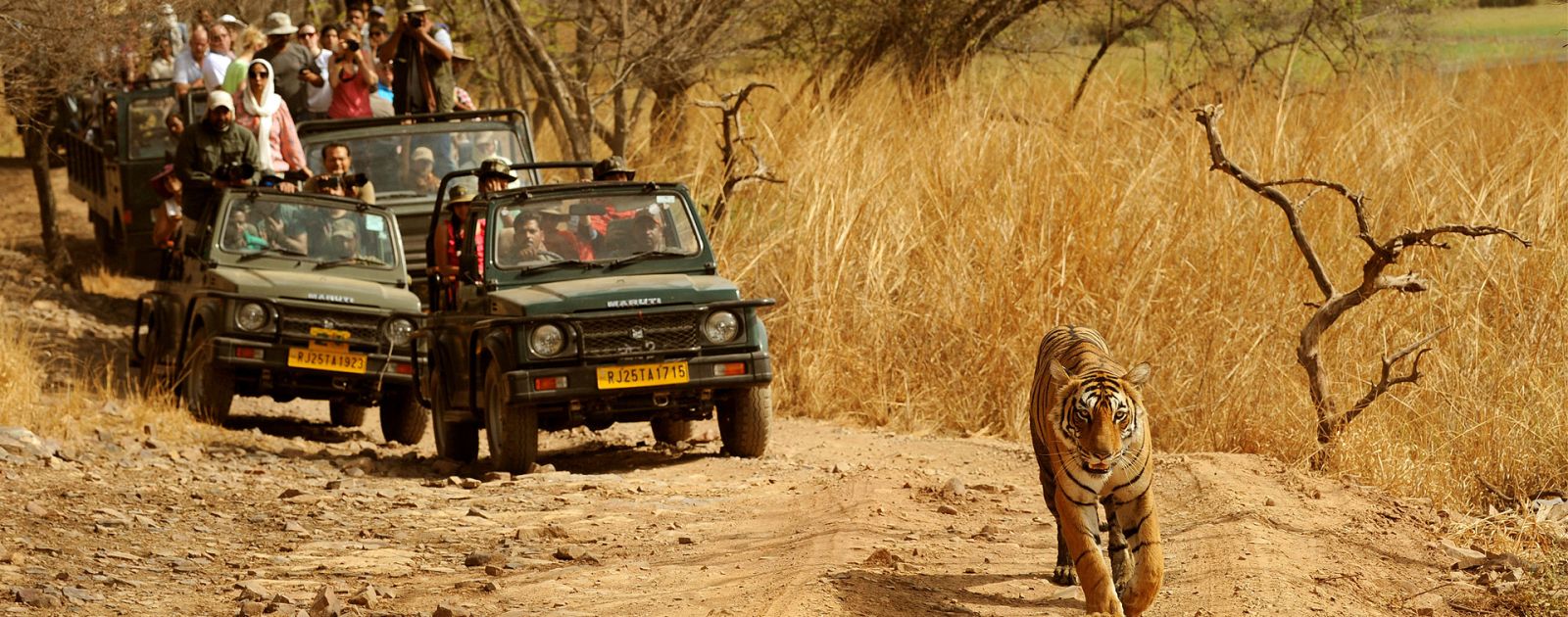About Ranthambore
Ranthambore - Where Tigers Roam Amid Ruined Forts
Ranthambore, in Rajasthan's Sawai Madhopur district, is India's best-known place to see wild Bengal tigers in their natural habitat. The former hunting reserve of Jaipur's maharajas blends raw jungle, serene lakes and the dramatic 10th-century Ranthambore Fort, creating an unforgettable wildlife-plus-heritage experience.
Best Time to Visit
October - February: cool days, lush landscapes, good for birding but tall grass can make tiger sightings trickier.
March - June: dry heat forces animals to waterholes, so sightings peak (carry sun protection).
July - September: core safari zones 1-5 close for the monsoon, although buffer zones 6-10 sometimes stay open.
How to Reach
By Air: Fly to Jaipur International Airport (180 km), then drive or take a train/taxi.
By Train:Sawai Madhopur Junction sits on the Delhi–Mumbai main line; daily trains from Delhi, Jaipur, Kota, Mumbai, Agra & more.
By Road:NH-48 & NH-552 connect Ranthambore with Jaipur (3 hrs), Agra (5 hrs) and Delhi (7–8 hrs). State buses and private cabs run regularly.
Places to Visit & Top Attractions
Ranthambore National Park : 10 safari zones spread over 1,334 km² of dry-deciduous forest, lakes and grassland teeming with tigers, leopards, sloth bears, crocodiles, sambar deer and 300+ bird species. Dawn & dusk gypsy/ canter safaris last ~3 hours each.
Ranthambore Fort : A UNESCO World Heritage Hill Fort perched 700 ft above the park, offering panoramic jungle views, ancient temples and crumbling battle ramparts.
Padam Talao & Jogi Mahal : The park's largest lake; iconic photo spot for tigers, marsh crocodiles and migratory birds. The crimson-painted Jogi Mahal rest-house sits at its edge under a giant banyan tree.
Raj Bagh Ruins : Moss-covered pavilions and arches where wildlife wanders through medieval stonework – safari jeeps often pause here.
Surwal & Mansarovar Lakes : Peaceful winter bird-watching sites outside the core park limits.
Village & Craft Visits : Drop by Dastkar Ranthambhore to see rural artisans creating block-printed textiles, leather goods and blue pottery; proceeds support local communities.
Signature Experiences
-
Zone-hopping safaris: book multiple zones to increase tiger odds; March–May mornings are legendary among photographers.
-
Sunset from Ranthambore Fort: golden light over Padam Talao with distant peacock calls is pure magic.
-
Night under the stars: many eco-lodges offer outdoor bush dinners with folk music and fireside wildlife talks.
-
Village cycling tours: pedal through mustard fields and spot peacocks, langurs and rural life at a gentler pace.
What to Eat
While most travellers dine in their lodge buffets, Sawai Madhopur's simple dhabas and hotel restaurants serve hearty Rajasthani fare:
-
Dal Baati Churma – baked wheat balls, lentils & sweetened crumbles.
-
Laal Maas – fiery mutton curry perfect after a chilly winter safari.
-
Ker Sangri – desert beans & berries sautéed with chilli and yogurt.
-
Gatte ki Sabzi – gram-flour dumplings in tangy gravy.
-
Jungle Thali – many resorts offer a sampler platter of regional dishes.
Finish with Ghevar or Malpua , and sip a cardamom-laced masala chai around the campfire.
Shopping
Ranthambore isn't a major shopping hub, but you can pick up authentic crafts that directly benefit locals:
-
Dastkar Ranthambhore & Village Women Craft – tiger-motif textiles, block-printed scarves, quilted bags, leather notebooks.
-
Craft outlets near Shilpgram Gate – hand-carved wooden animals, miniature paintings, stone work.
-
Spice & pickle stalls in Sawai Madhopur Market – flavoursome memories to take home.






